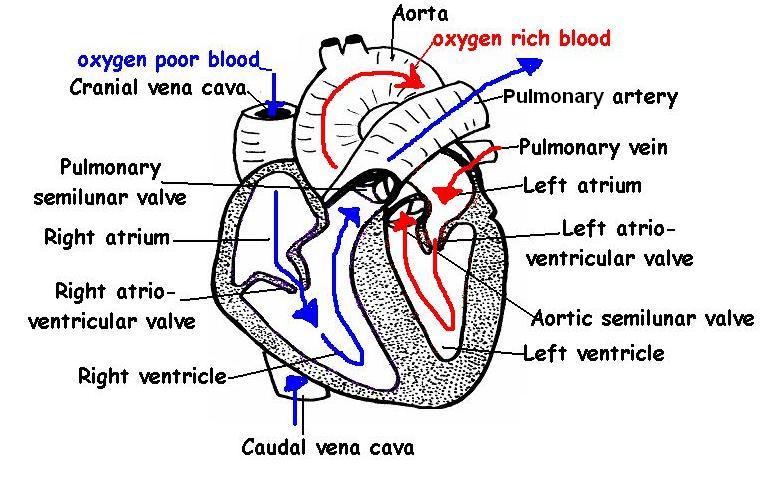Your heart is a muscle, it pumps blood around your body as it contracts. Inside your heart is essentially a network of nodes and vessels, these help nerve impulses from your brain tell it when to contract.
One of these nodes, the SAN (sinoatrial node) generate these electrical impulses which cause the heart to contract. The rate at which the SAN works (essentially your heart rate) is unconsciously controlled by part of your brain called the medulla. Animals (including humans) alter their heart rate to respond to certain stimuli - for example, your heart will beat faster if you've just been running. This system ensures that your body receives enough blood and oxygen to function.
For the body to respond to something, it first needs to be detected. There are two main types of receptors which help to control heart rate - baroreceptors and chemoreceptors.
Baroreceptors - these detect pressure in the aorta and vena cava. They're stimulated by high and low blood pressure. If you think about barometers which detect atmospheric pressure changes, that's essentially what a baroreceptor does, just in your heart!
Chemoreceptors - these are chemical receptors, they're found in the aorta and carotid artery (a major artery in the neck) and also in the medulla. The chemoreceptors monitor oxygen level in the blood, carbon dioxide level and pH. Knowing the pH level is very useful because its an indicator of oxygen level.
Once these receptors detect a change, electrical impulses are sent to the medulla along sensory neurones. The medulla processes this information and sends impulses to the SAN and the heart rate is adjusted.
This post specifically relates to AQA A-Level Biology Unit 5 - Responding to the Environment
One of these nodes, the SAN (sinoatrial node) generate these electrical impulses which cause the heart to contract. The rate at which the SAN works (essentially your heart rate) is unconsciously controlled by part of your brain called the medulla. Animals (including humans) alter their heart rate to respond to certain stimuli - for example, your heart will beat faster if you've just been running. This system ensures that your body receives enough blood and oxygen to function.
For the body to respond to something, it first needs to be detected. There are two main types of receptors which help to control heart rate - baroreceptors and chemoreceptors.
Baroreceptors - these detect pressure in the aorta and vena cava. They're stimulated by high and low blood pressure. If you think about barometers which detect atmospheric pressure changes, that's essentially what a baroreceptor does, just in your heart!
Chemoreceptors - these are chemical receptors, they're found in the aorta and carotid artery (a major artery in the neck) and also in the medulla. The chemoreceptors monitor oxygen level in the blood, carbon dioxide level and pH. Knowing the pH level is very useful because its an indicator of oxygen level.
Once these receptors detect a change, electrical impulses are sent to the medulla along sensory neurones. The medulla processes this information and sends impulses to the SAN and the heart rate is adjusted.
This post specifically relates to AQA A-Level Biology Unit 5 - Responding to the Environment


No comments:
Post a Comment